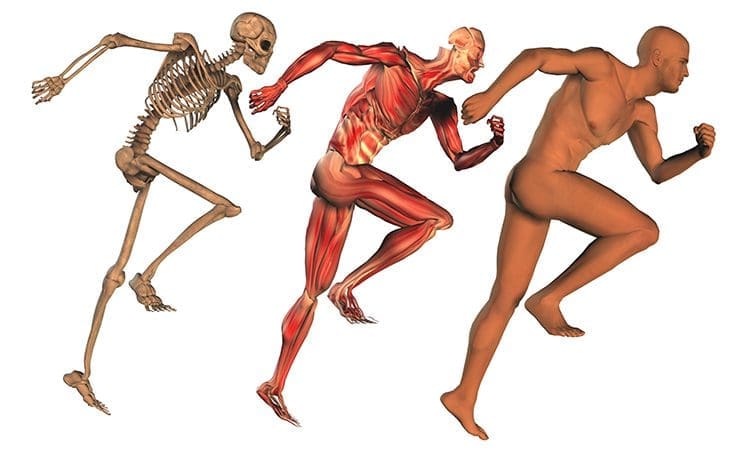Table of Contents
Introduction
The various muscles, tendons, and ligaments inside the body surround the skeletal joint to provide movement and multiple actions to allow the host to be mobile. The body also has various muscle groups, with soft tissues surrounding the vital organs to help support the body. Since the human body is mobile, many factors can cause issues to the body’s host and lead to chronic overlapping risk profiles that can correlate with pain in the joints and muscle tissues. When these factors are causing pain in the musculoskeletal system, various treatment techniques can help reduce the pain-like symptoms and help restore the body. MET, or muscle energy technique, is one of the different treatment techniques used by pain specialists like chiropractors, massage therapists, physical therapists, and occupational therapists on many individuals with musculoskeletal pain. Today’s article looks at the musculoskeletal system, how the issues affect the muscles, and how muscle energy technique is utilized to reduce muscle pain associated with the musculoskeletal system. We mention our patients to certified medical providers that provide available therapy treatments like MET (muscle energy techniques) for individuals suffering from chronic conditions associated with the musculoskeletal system. We encourage each patient when it is appropriate by referring them to associated medical providers based on their diagnosis or needs. We understand and accept that education is a marvelous way when asking our providers crucial questions at the patient’s request and acknowledgment. Dr. Alex Jimenez, D.C., uses this information as an educational service. Disclaimer
An Overview Of The Musculoskeletal System
The musculoskeletal system plays a huge role in the body, consisting of numerous muscle groups, tissues, ligaments, joints, and organs controlled by the central nervous system. The central nervous system provides the motor-sensory function to the musculoskeletal system, allowing the body to rest and move around. What the central nervous system does to the musculoskeletal system, according to research studies, it is revealed that these two systems have a relationship with each other as they are interconnected. Besides the various muscle groups that help surround the skeletal joints and provide mobility to the body, we will look at the connective tissue associated with the facial system and how muscle activity is affected by chronic issues.
Connective Tissue & The Fascial System
Regarding the musculoskeletal system, the connective tissue is one of the single abundant materials that allow each muscle group to be connected to its specific body region. The connective tissue comprises the body’s bones, muscles, blood vessels, and lymph nodes while embracing all the soft tissues and organs. The body’s connective tissue also works with the fascial system, giving the body the fundamental requirements. The fascial system is the structural form of the body since the fascial system is composed of connective tissues. With these two systems connecting and working together, it allows the muscles in the body to respond to various actions thrown at in different environments. The fascia web allows all muscle tissues to exist in isolation and interwoven with other structures to provide mobility.
Muscle Activity
Everything from the connective tissues to the fascia is involved in muscle activity in the musculoskeletal system. When the various muscles start to work with the body’s most movement, it is combined with one or more muscles acting as the prime mover or antagonist, allowing synergistic muscles to assist and contract simultaneously. The various muscle groups in the musculoskeletal system allow different actions, often repeated, to become stabilizing or antagonizing muscles. A great example is looking at the upper and lower extremities of the body. The upper extremities allow the arms, neck, head, and shoulders to have mobility when it comes to bending, twisting, and turning. While the lower extremities allow the hips, low back, legs, and feet to allow, stability and flexion to make the body move. However, these muscle groups can be affected by multiple factors that can affect muscle activity and lead to overlapping soft tissue pain profiles.
Issues Affect Muscle Activity
Since the body is a complex machine, different environmental factors can affect muscle groups in various ways and cause numerous pain issues. Now when it comes to environmental factors, many negative influences do play a role in affecting the musculoskeletal system in three categories:
- Biomechanical: trauma, overusing the muscles, congenital, etc.
- Biochemical: endocrine imbalances, inflammation, ischemia, nutritional deficiency, etc.
- Psychosocial: anxiety, depression, chronic stress, etc.
These influences can cause the muscles to tense up and restrict blood flow, causing pain and trigger points to form in the muscle fibers and making a person feel miserable. Fortunately, therapeutic techniques allow the muscles to relax and release the tension that the person is feeling.
MET(Muscle Energy Technique)-Video
What Is Muscle Energy Technique?
When people feel stressed, and their muscles become tight, they can develop pain-like symptoms that correlate with chronic issues. Fortunately, a revolution has taken place that many pain specialists like chiropractors and massage therapists take place when it comes to manipulative therapy through a technique known as MET or muscle energy technique. According to research studies, MET is an osteopathic manipulative medicine designed to improve the body’s musculoskeletal function. This technique helps target soft tissues and contributes to joint mobilization. The muscle energy technique allows the tight muscles and fascia to be stretched, improving circulation and lymphatic flow since chiropractors or doctors of chiropractic care utilize spinal manipulation to realign the body and restore joint function.
Additional studies also reveal that MET combined with chiropractic care allows pain reduction in the muscles and can increase the body’s range of motion. This technique is essential for chronic and acute low back pain, trigger point pain, and other musculoskeletal dysfunctions associated with environmental factors.
The Various Stretching Techniques Of MET
The main objective of MET is to induce relaxation of hypertonic musculature, which also stretches the muscles to reduce pain-like symptoms. Now many treatments like chiropractic care can combine different techniques to reduce pain and restore mobility to the individual. With MET, various stretching techniques can allow chiropractors to stretch the tense muscles while restoring the range of motion. Some of the stretching techniques that pain specialists use include:
- Facilitated stretching: Allows chiropractors and massage therapists to use strong/light isometric contractions to treat the muscles and be actively stretched. Reduces muscle cramps, tissue damage, or pain to the affected muscle group while utilizing breathing techniques and producing sufficient post-isometric relaxation.
- Active-isolated stretching: Allows chiropractors and massage therapists to stretch the affected muscle actively while using precise localization to allow the affected muscle to receive a specific extension. This allows the muscles to relax through a short repetitive contraction and retraction to increase oxygenated blood flow. This stretching technique prevents the activation of the myotatic stretch reflex on the affected muscle.
- Static stretching: In yoga, the individual can maintain a position for a few minutes to allow deep breathing and slowly release contracted and tensed muscle tissues to relax. This stretch also releases myofascial trigger points from the affected muscle groups.
- Ballistic stretching: This stretch provides a series of rapid, bouncing movements that allow the short muscles in the body to be lengthened rapidly.
Conclusion
When the body encounters environmental factors that can cause pain-like symptoms to the host, it can develop into pain and other chronic conditions affecting a person’s life. Many techniques like MET (muscle energy technique) allow the musculoskeletal system to stretch out tense muscles and help restore mobility to the body. Pain specialists like chiropractors can incorporate various MET stretching techniques combined with spinal manipulation to restore the body to its original state.
References
Chaitow, Leon, and Judith Walker DeLany. Clinical Applications of Neuromuscular Techniques. Churchill Livingstone, 2003.
Murphy, Andrew C, et al. “Structure, Function, and Control of the Human Musculoskeletal Network.” PLoS Biology, U.S. National Library of Medicine, 18 Jan. 2018, https://www.ncbi.nlm.nih.gov/pmc/articles/PMC5773011/.
Thomas, Ewan, et al. “The Efficacy of Muscle Energy Techniques in Symptomatic and Asymptomatic Subjects: A Systematic Review.” Chiropractic & Manual Therapies, U.S. National Library of Medicine, 27 Aug. 2019, https://www.ncbi.nlm.nih.gov/pmc/articles/PMC6710873/.
Waxenbaum, Joshua A, and Myro Lu. “Physiology, Muscle Energy – StatPearls – NCBI Bookshelf.” In: StatPearls [Internet]. Treasure Island (FL), StatPearls Publishing, 25 July 2022, https://www.ncbi.nlm.nih.gov/books/NBK559029/.
Disclaimer
Post Disclaimer
Professional Scope of Practice *
The information on this blog site is not intended to replace a one-on-one relationship with a qualified healthcare professional or licensed physician and is not medical advice. We encourage you to make healthcare decisions based on your research and partnership with a qualified healthcare professional.
Blog Information & Scope Discussions
Welcome to El Paso's Premier Wellness and Injury Care Clinic & Wellness Blog, where Dr. Alex Jimenez, DC, FNP-C, a board-certified Family Practice Nurse Practitioner (FNP-BC) and Chiropractor (DC), presents insights on how our team is dedicated to holistic healing and personalized care. Our practice aligns with evidence-based treatment protocols inspired by integrative medicine principles, similar to those found on this site and our family practice-based chiromed.com site, focusing on restoring health naturally for patients of all ages.
Our areas of chiropractic practice include Wellness & Nutrition, Chronic Pain, Personal Injury, Auto Accident Care, Work Injuries, Back Injury, Low Back Pain, Neck Pain, Migraine Headaches, Sports Injuries, Severe Sciatica, Scoliosis, Complex Herniated Discs, Fibromyalgia, Chronic Pain, Complex Injuries, Stress Management, Functional Medicine Treatments, and in-scope care protocols.
Our information scope is limited to chiropractic, musculoskeletal, physical medicine, wellness, contributing etiological viscerosomatic disturbances within clinical presentations, associated somato-visceral reflex clinical dynamics, subluxation complexes, sensitive health issues, and functional medicine articles, topics, and discussions.
We provide and present clinical collaboration with specialists from various disciplines. Each specialist is governed by their professional scope of practice and their jurisdiction of licensure. We use functional health & wellness protocols to treat and support care for the injuries or disorders of the musculoskeletal system.
Our videos, posts, topics, subjects, and insights cover clinical matters and issues that relate to and directly or indirectly support our clinical scope of practice.*
Our office has made a reasonable effort to provide supportive citations and has identified relevant research studies that support our posts. We provide copies of supporting research studies available to regulatory boards and the public upon request.
We understand that we cover matters that require an additional explanation of how they may assist in a particular care plan or treatment protocol; therefore, to discuss the subject matter above further, please feel free to ask Dr. Alex Jimenez, DC, APRN, FNP-BC, or contact us at 915-850-0900.
We are here to help you and your family.
Blessings
Dr. Alex Jimenez DC, MSACP, APRN, FNP-BC*, CCST, IFMCP, CFMP, ATN
email: coach@elpasofunctionalmedicine.com
Licensed as a Doctor of Chiropractic (DC) in Texas & New Mexico*
Texas DC License # TX5807
New Mexico DC License # NM-DC2182
Licensed as a Registered Nurse (RN*) in Texas & Multistate
Texas RN License # 1191402
ANCC FNP-BC: Board Certified Nurse Practitioner*
Compact Status: Multi-State License: Authorized to Practice in 40 States*
Graduate with Honors: ICHS: MSN-FNP (Family Nurse Practitioner Program)
Degree Granted. Master's in Family Practice MSN Diploma (Cum Laude)
Dr. Alex Jimenez, DC, APRN, FNP-BC*, CFMP, IFMCP, ATN, CCST
My Digital Business Card




